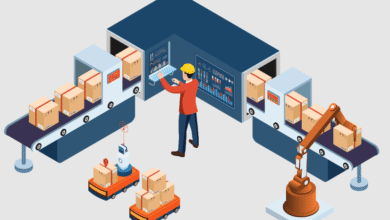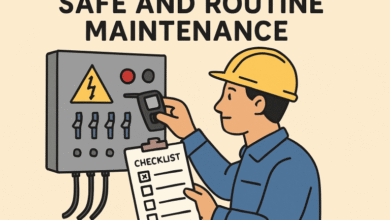How Donor Advised Funds Spark Community Growth and Create New Jobs

Donor advised funds (DAFs) have emerged as vital tools in the contemporary philanthropic landscape, where the growth of private wealth often parallels an increasing demand for public support and charitable contributions. These funds offer significant advantages beyond mere tax incentives; they act as powerful instruments for individuals and families seeking to engage in purposeful and strategic philanthropy. By allowing donors to channel their financial resources into specific causes or organizations, DAFs enable a more thoughtful and impactful approach to giving, fostering a deeper connection between donors and the needs of their communities.
Table of Contents
What Are Donor-Advised Funds?
Donor Advised Funds, often referred to as DAFs, are specialized accounts that enable individuals, families, or organizations to make charitable contributions, You can get a tax deduction right away and then suggest grants from the fund over time.
Public charities manage these funds and offer a more strategic, long-term approach to philanthropy compared to one-time donations. The process is straightforward: donors contribute cash, securities, or other assets to the DAF, allowing the funds to be invested and even grow tax-free. Later, grants can be made to a variety of nonprofit organizations at the donor’s request.
Their flexibility and potential for impact have fueled the rise of DAFs. In recent years, assets held in DAFs have proliferated, with some estimates pointing to more than $230 billion in total DAF assets nationwide. This growth has influenced how individuals plan their charitable giving, encouraging a more thoughtful allocation of resources to projects and areas that align with their personal values and local needs.
Companies such as DAF Hold Co are part of this evolving landscape, offering tailored solutions that empower donors to make a difference both locally and nationally through carefully managed funds. As philanthropic trends continue to evolve, DAFs are becoming central to discussions around sustainable and accountable giving. They not only provide tax advantages but also foster deeper engagement between donors and the causes they care about. With the right strategy and support, donor advised funds have the power to transform short-term generosity into long-term social change.
The Connection Between Philanthropy and Economic Development
The role of philanthropy goes far beyond simply supporting deserving causes; it is an engine that can drive widespread and sustainable economic development. Communities that experience robust charitable investment tend to see improvements like upgraded infrastructure, improved schools, increased access to healthcare, and new cultural amenities—all of which serve as catalysts for broader economic growth.
Philanthropic dollars can fill crucial gaps where government funding may be lacking, providing neighborhoods and regions with a critical boost toward self-sufficiency and resilience.
Furthermore, donor advised funds are uniquely equipped to respond with speed and precision to emerging local challenges. As an example, when a natural disaster strikes or an economic shock disrupts a local workforce, DAFs can deploy resources quickly and with fewer bureaucratic delays.
This kind of nimble, thoughtful giving enhances a community’s ability to rebound and grow, multiplying the long-term benefits that philanthropic involvement can produce.
Donor Advised Funds and Community-Focused Initiatives
One of the most potent aspects of DAFs is their capacity to fund community-focused initiatives in areas that matter most, such as affordable housing, access to nutritious food, small business development, and skills training. When a DAF invests in a local microloan program, for instance, it helps underserved entrepreneurs launch or expand their businesses, sparking cycles of job creation and innovation that empower entire neighborhoods.
The support extends further when Donor Advised Funds back public works projects, such as parks, libraries, and broadband infrastructure. In these cases, philanthropic dollars translate into concrete improvements for residents while also creating new employment opportunities in construction, maintenance, and the future operation of these amenities.
Several regions across the country have seen DAFs serve as a bridge between charitable intent and pressing local needs. Community foundations, in particular, are often trusted intermediaries that use DAF dollars to launch and scale programs designed by and for residents.
In real-world scenarios, this can mean a workforce training center that pairs adults with much-needed tech certifications, or a community kitchen that offers job placements to individuals overcoming barriers to employment.
Job Creation Through Charitable Investments
The connection between philanthropic giving and job creation is increasingly visible through robust research and practical evidence. These investments can take many forms, including direct funding for apprenticeship programs, tuition support for specialized training, and wraparound services such as childcare and transportation. Each of these components helps break down the barriers that keep people from entering or advancing in the labor force.
It’s also important to consider the quality of jobs created through these philanthropic efforts. Programs supported by DAFs often emphasize not just employment but advancement, focusing on technical skills, digital literacy, and entrepreneurship. Participants are more likely to secure positions that reflect greater stability and upward mobility, as opposed to temporary or entry-level roles.
This focus on sustainable job creation leads to a stronger economic base and more confident, self-sufficient communities overall.
How Communities Can Benefit from Strategic DAF Deployment
Communities and local organizations can unlock mutual benefits by engaging more intentionally with donor advised funds. This can begin with proactive outreach, such as through neighborhood associations, nonprofits, and civic leaders who clearly communicate their needs and priorities, thereby positioning themselves to attract DAF investments targeted at local solutions.
Strategic DAF deployment means aligning charitable dollars with the most pressing gaps—be it job training for youth, health services, or safe, affordable housing.
Accessing up-to-date information on how DAFs operate and emerging philanthropic trends is crucial for communities seeking to establish these partnerships. By understanding the changing landscape of giving, communities are better equipped to propose projects, collaborate on solutions, and maximize the local impact of donor advised funds.
Challenges and Considerations in Scaling Economic Impact
While Donor Advised Funds offer great promise, it’s essential to address the challenges associated with scaling their impact. A key issue is transparency, as DAFs are not always required to disclose when and where money is distributed. There is an ongoing debate about how to ensure these funds are being utilized effectively for the public good. Advocates are calling for stronger reporting and data-sharing practices, arguing that visibility leads to greater trust and better outcomes.
Another consideration is balance. Philanthropic investment is most effective when it complements government and private funding, rather than replacing them. Success stories consistently demonstrate high levels of community involvement, clear and measurable goals, and ongoing feedback mechanisms.
These best practices help avoid duplication of efforts and ensure DAF-supported projects are both inclusive and sustainable, able to weather shifts in the economic or philanthropic environment.
See also: Preventing Common Plumbing Emergencies at Home
Looking Forward: The Future Role of Donor Advised Funds in Revitalizing Communities
The trajectory for donor advised funds continues upward, with even greater emphasis likely to be placed on transparency, collaboration, and results. The model is already proving itself adaptable, whether mobilizing resources in response to crises, investing in long-term development, or experimenting with new approaches to workforce and business support.
Advances in technology, improved data tracking, and increased collaboration between donors and communities can all contribute to strengthening the impact of DAFs.
Ultimately, DAFs play a crucial role in building forward-thinking, opportunity-rich communities. Their strengths—flexibility, ambition, and a focus on sustainable results—allow them to help write a new story for towns and cities in need of renewal. As more donors, businesses, and civic leaders recognize the tools at their disposal, the potential for prosperity through coordinated, strategic giving will only continue to grow.



